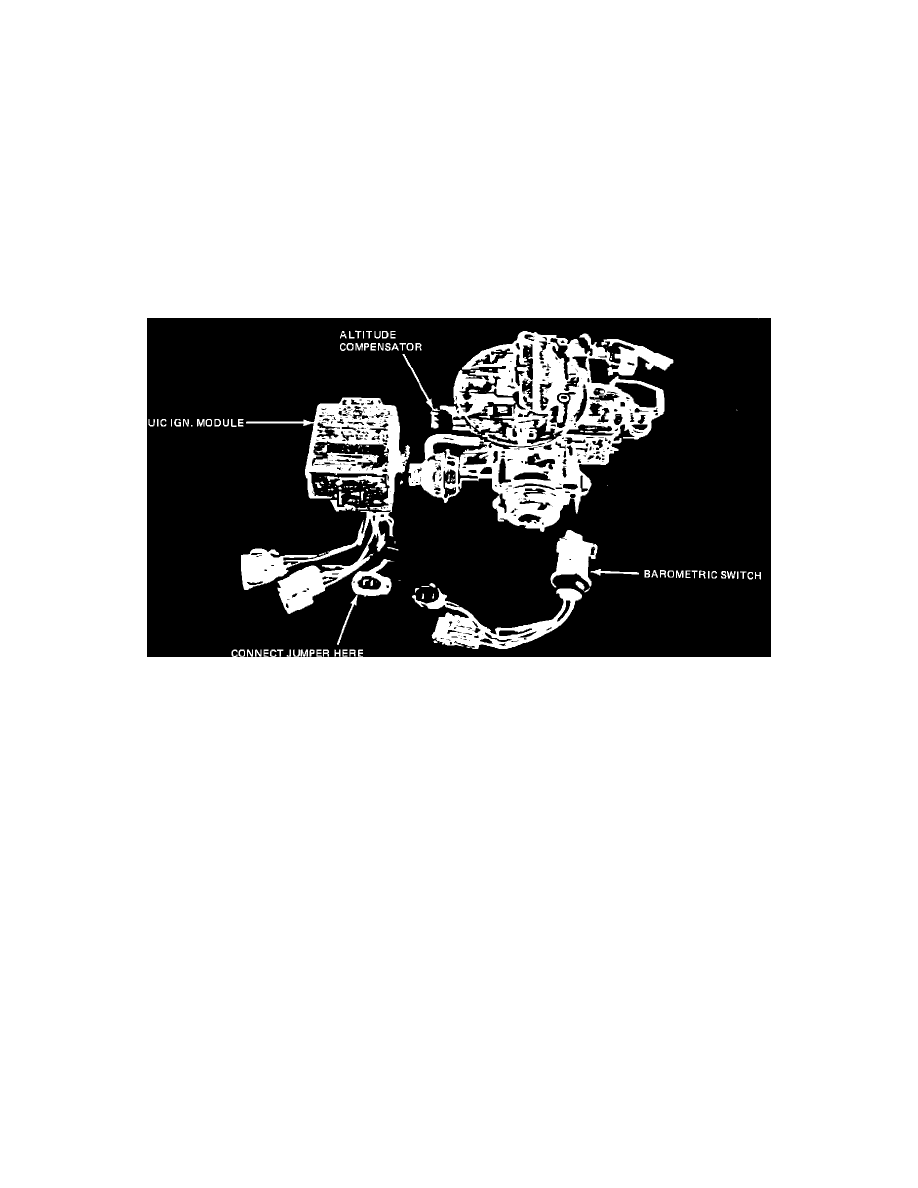Marquis V6-232 3.8L VIN C 2-bbl (1984)

Electronic Spark Control Module: Technical Service Bulletins
Carburetor - Diagnostics/Servicing
Article No. 84-19-7
CARBURETOR - DIAGNOSTIC/SERVICING (3.8L WITH 2150 CARBURETOR)
FORD 1984 LTD
LINCOLN-MERCURY 1984 MARQUIS
CALIBRATION: 4-14B-R11
Some 1984 LTD/Marquis vehicles were built with the 2150-2V carburetor which incorporates altitude compensation for fuel and spark. This article
outlines diagnostic and servicing instructions.
Figure 10
The 4-14B-R11 (3.8L 2V, 49 States, C5 LTD/Marquis) calibration incorporates altitude compensation for fuel and spark. Three components are used to
accomplish this compensation; the carburetor altitude compensator, the UIC ignition module, and the barometric pressure switch. Service and diagnostic
information for these components are shown below (Refer to Figure 10):
Altitude Fuel/Air Ratio Compensation
The altitude compensator, located on the back of the carburetor, is a two-position (open or closed) device. When open, it reduces fuel flow by bleeding
air into the carburetor main and idle circuits. The carburetor is the same type as 2150A feedback carburetor except the feedback motor is used as an
altitude compensator only.
The altitude compensator is activated by a barometric switch whose switch point is approximately 3,500 ft. Below the switch point no power is applied
to the compensator. Above the switch point, battery voltage is applied to the compensator with the ignition switch on.
Service Information
A.
Below 3,500 ft.
The altitude compensator should be closed, that is, no power applied to the compensator with the ignition switch on. If power is present at the
compensator, replace the barometric switch.
B.
Above 3,500 ft. The altitude compensator should be open, that is, power should be applied to the compensator with the ignition switch on.
If power is not present at the compensator, check for power to the barometric switch. If power is
available to barometric switch but not to the compensator, replace the barometric switch.
C.
Operational Check of Altitude Compensator Power must be applied to the compensator - below 3,500 ft. this must be done artificially by removing
the connector from the rear of the compensator on the rear of the carburetor and applying a battery voltage to one spade connector and grounding
the other. When power is applied or removed, an audible "click" should be heard. Below 3,000 ft. with power applied to the compensator, the
engine should idle and run rough. Above 3,000 ft. engine idle and run characteristics may not change significantly as compensator is opened and
